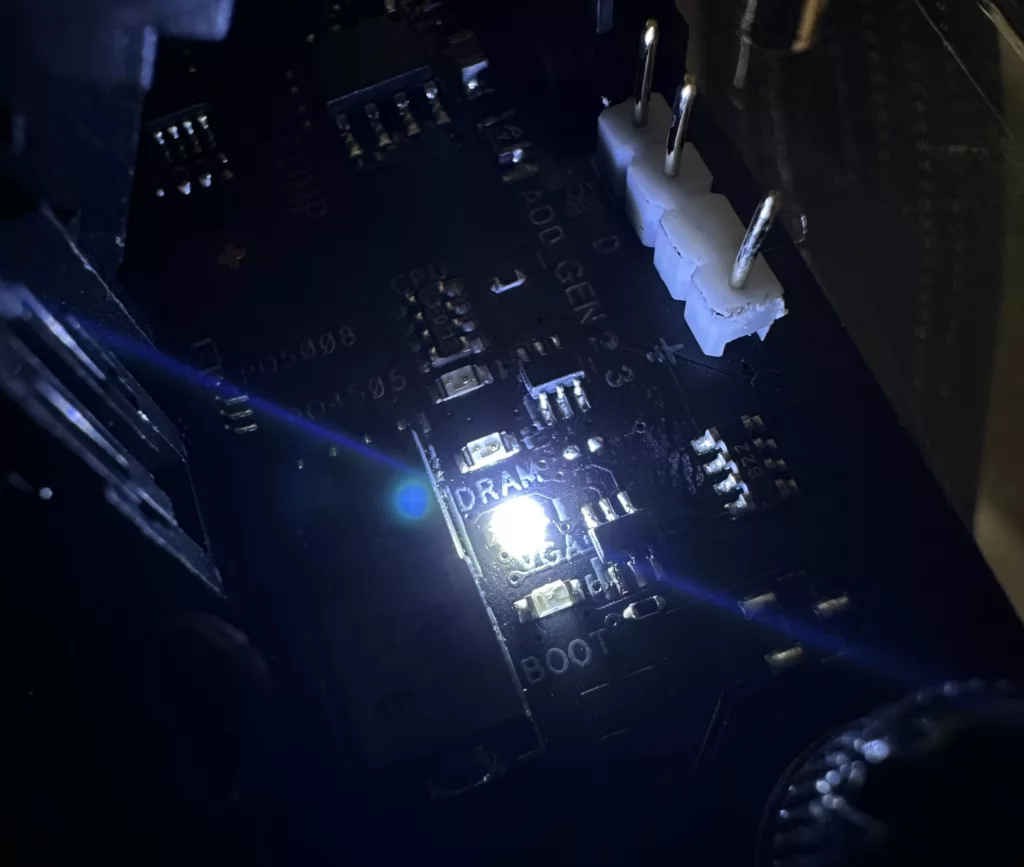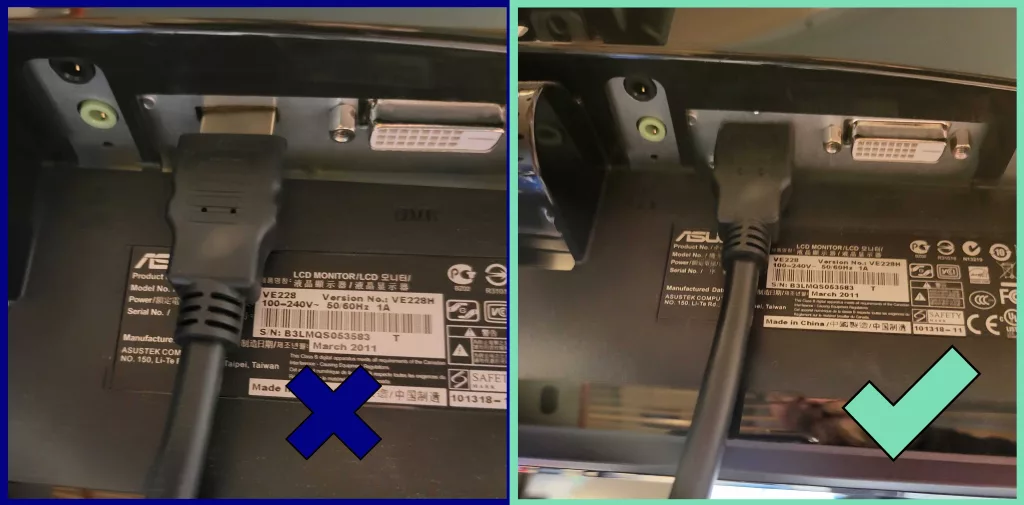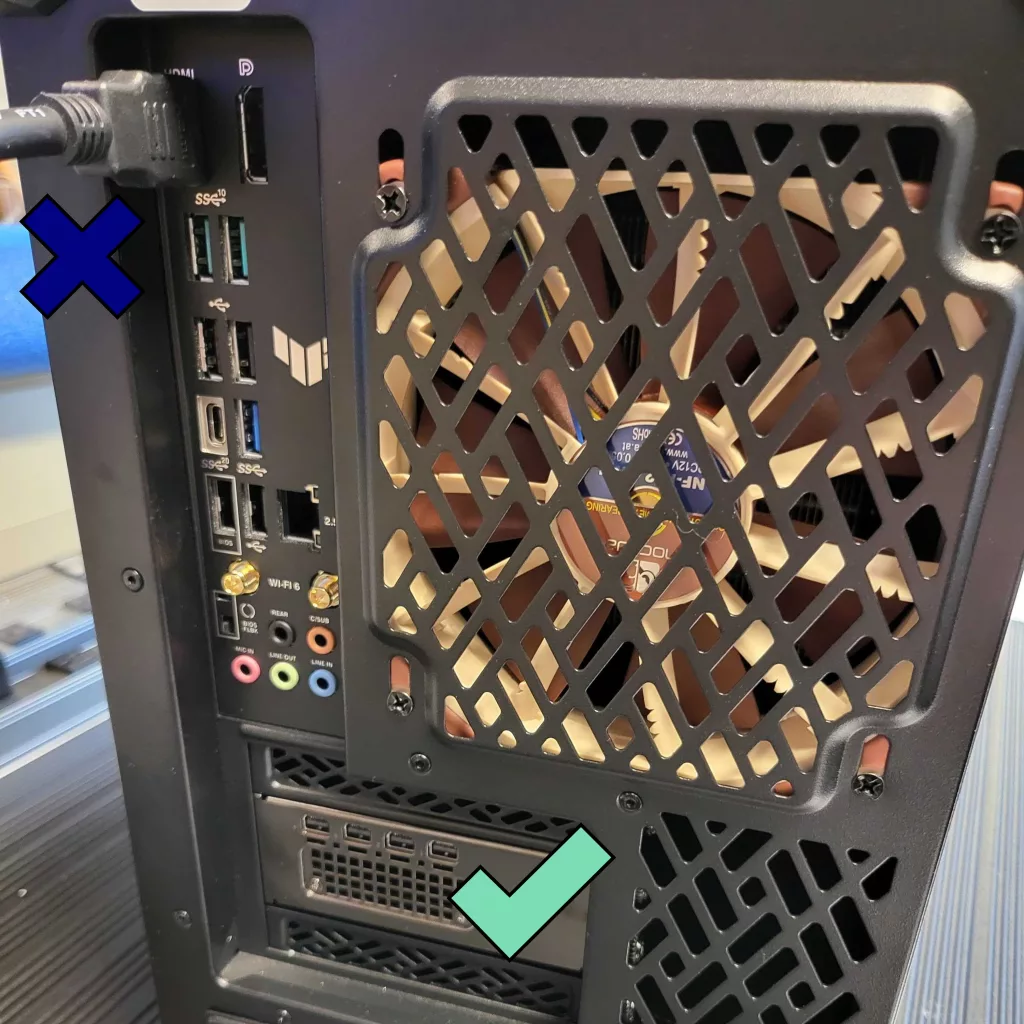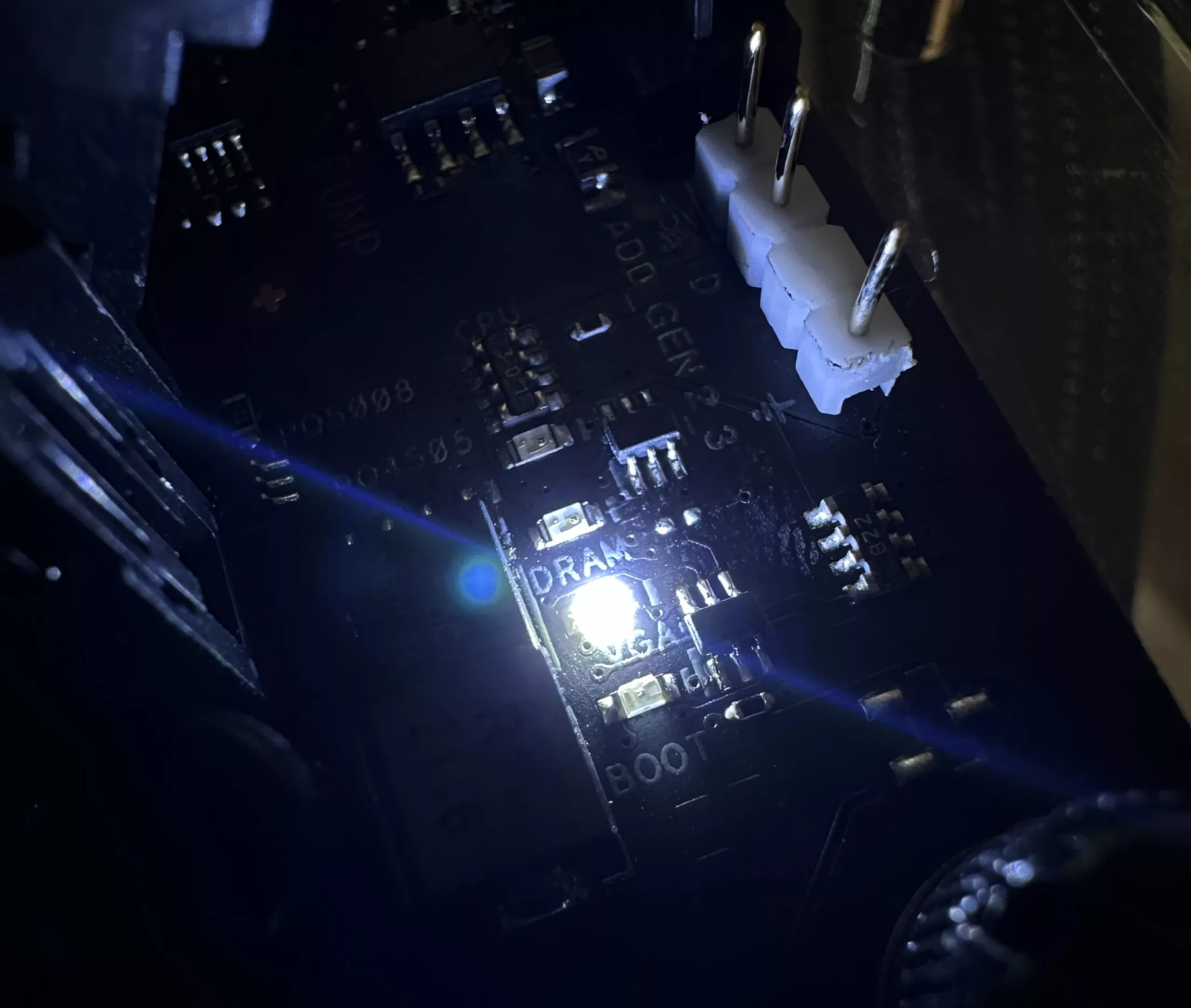Table of Contents
Intro
One of the most common conditions that can cause a PC not to boot is a “VGA POST Failure”. This article will explain what that means and how to fix it.
Every time a PC is powered on, the motherboard goes through a process called POST (Power On Self Test). This test consists of 4 phases that all occur in a mater of seconds:
- CPU
- DRAM
- VGA
- BOOT
The VGA (Video Graphics Array) stage of POST is when the motherboard attempts to identify a valid video output is present. This phase will fail if the motherboard cannot find a valid video output, and the resulting failure will cause the system to stall and (usually) sound an alarm of one long beep followed by three short beeps.
If you are stuck on a blank screen after powering on your system and hear one long beep followed by three short beeps, read on to learn how to fix this!
How to Identify a VGA POST Failure
A system that is not able to boot could be a VGA failure if any or all of the following conditions are true:
- The system powers on but the the monitor does not respond and is stuck on a completely blank screen.
- The system sounds an alarm consisting of 4 beeps in the pattern, one long, followed by three short.
- The VGA indicator LED on the motherboard stays illuminated during POST.

Causes and Troubleshooting Steps
VGA POST failure is one of the more common types of boot failure because it can be caused by a great number of things ranging from benign configuration oversights to serious hardware faults. Bellow are some possible reasons a PC would fail to POST with a VGA error.
Display Cable Seating Issues/Damage
Most modern GPUs require at least one connected display for the system to complete the VGA phase of POST. If a display cable is NOT connected to the video card, then this can result in a POST failure, preventing the system from booting. One of the first and easiest troubleshooting steps we can perform is to verify that each display cable is connected to and fully seated into the display cable plug on the video card and the monitor. Additionally, verify that the correct monitor input is selected via the On Screen Display (OSD) of the monitor. It is also essential in multiple monitor setups that every display cable plugged into the video card is also plugged into a display. Pre-wiring display cables for potential future monitor additions is not recommended.
Testing with alternate cables, if available, is a great troubleshooting step. Depending on your hardware’s available connections, testing with another cable type is also advised.

Faulty Display
Monitor issues can cause a system to fail to boot with a VGA POST error for the same reason as a disconnected cable. If the PC is not recognizing the display, the system will fail to boot. An important troubleshooting step to help identify the cause of a VGA POST error is to connect the PC to an alternate display.
Disabled Onboard Video
Often, when a dedicated video card is installed, the onboard video functionality of some processors may be disabled. Motherboards that support CPUs with onboard video chips will usually include an onboard video output such as an HDMI or DisplayPort out. However, when a system is configured with a dedicated video card, the display cable should always be connected directly to the video card, not to the onboard video output.

KVM Switch Incompatibility or Excess Cable Adapters
This section only applies if you use a KVM to switch between multiple devices on a single display. KVMs can sometimes cause this issue due to a fault in the KVM switch or, more often, a general incompatibility between the KVM, display cable, and video card. If you use a KVM, you can confirm whether a VGA POST error is caused by the KVM by connecting the display directly to the system, bypassing the KVM.
Additionally, Using a KVM switch with a DisplayPort to HDMI adapter can prevent a video signal from reaching the display as well. Troubleshoot by testing without adapters.
Video Card Power Cable
A VGA POST error can occur if the internal power connections for the video card become dislodged. These internal power cables can be located by removing the side panels on your Puget Desktop PC and inspecting the video card and power supply. The power cables for the video card consist of a plug on each end with eight pins and a usually-sleeved cable. Depending on the video card, there may be up to 4 individual eight-pin cables connecting to an adapter that connects to the video card, or these cables may connect directly to the video card. In either case, troubleshooting means inspecting to verify that the video card power cables are fully seated into the video card and the power supply.

Faulty Video Card
Finally, if previously listed VGA POST failure causes have been ruled out, the issue could be caused by a faulty video card (Or, even less likely, a faulty motherboard). The first step to verify if a video card could be defective in a no-POST environment is to reseat the card. Next, if boot failure persists, an alternate video card can be used to test the other hardware components in the system and verify the issue is caused by this particular card. If no additional video cards are available for testing purposes, and your CPU provides onboard display, connecting the display to onboard video can rule out the video card as the cause.
For instructions on reseating or swapping a video card in a desktop tower chassis, see our guide describing the GPU swap procedure in a Fractal Define R6. The process will be similar in most desktop tower PCs, but may vary in some of the details such as removing bracing, which may be unique to your video card/chassis.
Other Possible POST Failure Conditions
A system failing to POST without the VGA LED illuminated or without one long and three short beeps may be another type of POST Failure. If the system fails to power on, power supply troubleshooting may reveal if the issue is related to a faulty PSU. In either case, VGA troubleshooting may not be helpful and it may be necessary to look to other components in the system to troubleshoot such as the RAM, power supply, external peripherals, or drives.
Conclusion
This article covers the most common causes of VGA POST failure boot issues but may not cover every possibility, and no hardware troubleshooting guide is future-proof. New developments and changes in hardware architecture in the future may make this guide obsolete, or your particular issue may not fall into one of these categories. However, most of the causes of VGA POST failure are included here.
If your Puget Systems PC still does not POST after ruling out each of the possible reasons in this guide, a hardware issue may be the cause. Please call or email our support team for additional troubleshooting steps or to discuss system repairs.
Need help with your Puget Systems PC?
If something is wrong with your Puget Systems PC, we are readily accessible, and our support team comes from a wide range of technological backgrounds to better assist you!
Looking for more support guides?
If you are looking for a solution to a problem you are having with your PC, we also have a number of other support guides that may be able to assist you with other issues.
